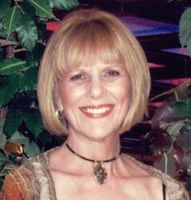Your Top 8 Christmas Carol Messages for a Safe Holiday © Dr. Eileen Silva
If you burn or scald yourself while Rocking Around the Christmas stove, stirring the merrily simmering pots and pans, pulling hot Santa cookies from the oven, or basting that turkey or ham, follow the American Medical Association’s First Aid for Burns instructions: run cool water over the affected area for fifteen minutes and then cover area with a loose gauze dressing. Do not apply creams or ice to the area. Ice can further damage skin tissues.
If you find yourself Up on the Rooftop, please don’t fall! When installing Christmas lights on the house or in trees, please remember these safety tips so that your White Christmas is snow, not cast material:
· Climb on a sturdy ladder instead of a chair or a box to reach high places.
· Never stand on the bucket shelf or above the advised steps on a ladder.
· Face the ladder when climbing up or down.
· If you are using ladder to install outside lights, use wooden or fiberglass ladders near power lines and electrical wiring as metal ladders conduct electricity.
· Use a ladder that extends 3 feet over the working surface and set the ladder on a firm, level surface, avoiding soft or muddy ground.
· If you are going to be lifting sacks and boxes heavy enough to rival Santa’s bag, remember to spread the load evenly between your arms and lift with your knees, not your back.
Deck the halls with boughs of holly . . . not with cuts, stabs, fires, or electrocution! Beware of accidents when you are decorating that beautiful Christmas tree and those garland-draped rooms. You may be cut, stabbed, or electrocuted, while cutting the tree trunk or branches, reaching into the branches to decorate, plugging in lights, or you might fall reaching for the heights. Speaking of trees . . . be aware that a dry tree is dangerous! Pull your hand along a branch to the end. If you have only a few needles in your hand, it is a fresh tree and less likely to burn.
Other tips to avoid tree fires:
· Shake tree off before taking it inside to get rid of dead needles.
· Set tree away from fireplaces, heaters, heating vents, or stoves that can dry it out.
· Saw at least on inch off the bottom and keep tree in water deep enough to rise above the cut.
· Use tree lights that bear the Underwriters' Laboratory (U.L.) label.
· Check light strings for signs of wear and tear.
· Do not use frayed lights or operate with missing or broken bulbs.
· Use no more than three sets of lights per extension cord.
· Do not place the cords under rugs or in paths of travel.
· Turn off the tree when you’re away from the area.
If Mommy kissing Santa Claus has ever happened by candlelight at your house, remember that candles are a regular source of house fires. Make sure your candles are several feet away from flammable objects, and never leave them burning when you leave home or go to sleep. Keep children and pets away from burning candles and be careful of hot melted wax when moving candles.
Chestnuts roasting on an open fire are fine, but never burn Christmas wrapping paper and boxes in your fireplace. Wrapping paper and boxes blaze up with excessive heat, which may damage your chimney and cause a fire in the wall. Burning these items leaves a film in the chimney that can damage it. Do not burn branches from the tree in your fireplace. Dry trees throw off a tremendous amount of heat and can create a dangerous fire. Avoid burning any soft woods, especially pine, fir, or cedar as they burn hot and fast, leaving a pitchy coating in the chimney that can actually blaze up itself. Restrict your use of soft woods to small amounts for kindling to start the fire, and only burn hardwood logs like oak, ash, or mesquite.
Here Comes Santa Claus! . . . down your chimney! Have your chimney cleaned regularly and inspect it annually for mortar cracks, loose brick, or cracks in the chimney liner. Don’t build a fire that is too large for your fireplace to accommodate safely and make sure you have good ventilation. Build your fire in the rear of the fireplace and always use a fireplace screen. Never leave a fire unattended or set furnishings, clothing, papers, or anything else flammable within four feet of the fireplace.
That Winter Wonderland outside is beautiful, but not if you don’t have a warm house to observe it from. Christmas is a dangerous time for house fires. Space heaters, especially too close to trees, curtains, bedding, etc., overloaded electrical sockets, oversized Christmas tree lights, dried-out Christmas trees, unattended candles and light strings, inappropriate material in fireplaces, and greenery too close to fireplaces or heaters are all potential fire sources. Check your smoke detectors. If battery powered, change the batteries twice each year. The Fire Department suggests that you change the batteries when you adjust clocks for Day Light Savings.
So there you have it: 8 musical memories with 8 major safety tips to help you have the holidays you always dreamed of.


0 Comments:
Post a Comment
<< Home